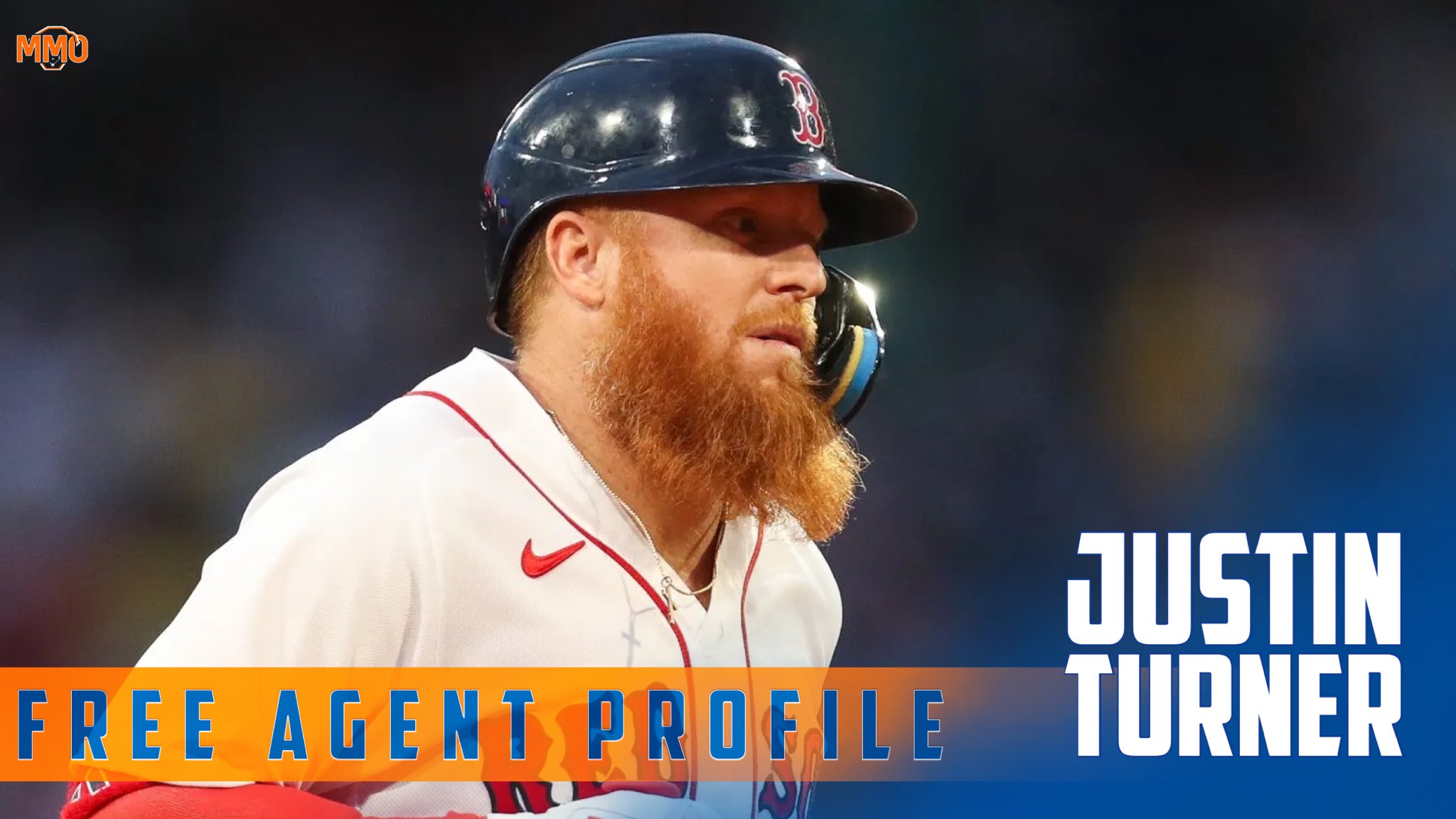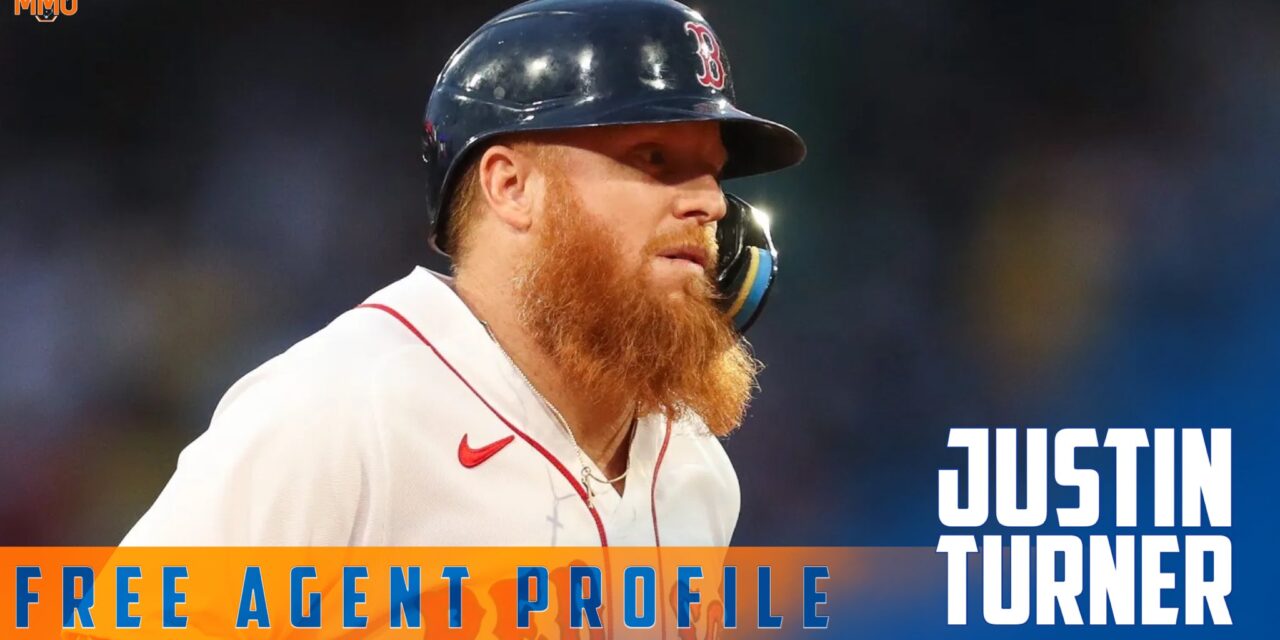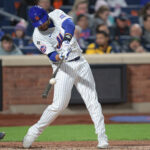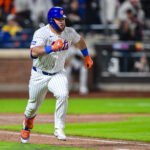Justin Turner, INF
Position: IF/DH, B/T: R/R
Age: 38 (11/23/1984)
2023 Traditional Stats: 626 PA, .276/.345/.455, 154 H, 23 HR, 96 RBI
2023 Advanced Stats: 114 wRC+, 17.6 K%, 8.1 BB%, .346 wOBA, .336 xwOBA, 1.2 fWAR, 2.1 bWAR

Rundown
I feel like I wrote a profile on Justin Turner in 2020, and the feeling was: “Please not another old guy.” From 2021-2023, Turner has slashed .277/.352/.455 and averaged 21 homers a season. He’s not quite the guy he was from 2017-2020, but he possesses a skillset that ages quite well and fits the Mets in many ways.
Offensively, Turner remained quite good at not chasing pitches out of the zone. He only chased 29.6% of pitches he saw in 2023. For his career, he has only swung at 27.2% of pitches out of the zone. He still makes a ton of zone-contact and does not really swing-and-miss. Those two diminishing would have hinted at a slower bat speed, but those numbers actually went from 86.7% to 91% and 8.8% to 7%, respectively.
An early adopter of the launch angle revolution, Turner still approaches the game to pull lots of fly balls in the air. Turner’s ground-ball rate has never crept up over 37% since 2015. Turner’s approach to hitting is very much a process over results approach. Back in 2017, Turner said: “If I fly out four times, I had a great night, because I didn’t hit a ground ball.” I wanted to note this quote because I think, by all accounts, the Mets are trying to move towards more analytics on their coaching staff after a more old-school staff in 2022-2023. The players have had moments where they have, shall we say, shown a resistance to using analytics in their process. Do I want the Mets to sign Justin Turner because he would help integrate analytics to the players? No. Do I think it would be an added bonus to have a well-respected and vocal veteran helping his teammates see the value of using analytics to improve their process at the plate? Yes.
While Turner’s season may appear as “fine,” I think some context is missing. Until 8/31, Turner was slashing .287/.357/.488 with a .363 wOBA and 126 wRC+. In September, he slashed .221/.286/.295. Father time is undefeated, and a 38-year-old Turner was probably drained by September. I think with more rest to get him through the season, Turner’s strong approach at the plate should be able to overcome whatever natural decline that he ends up facing.
Now, there is the question of how the Mets can use him. Brett Baty was a highly touted prospect last season and I am not sure the Mets want to move him while his stock is as low as it is. With that said, I don’t think they will be handing him the starting job without any sort of viable backup. If Baty can show he’s a viable third baseman, Turner will still be able to get playing time as a DH and occasional first baseman. If Baty cannot improve from 2023, Turner can fill in until he is ready, or the Mets can find a better long-term answer. Turner’s defense at third is probably where he’s seen the biggest decline, but given the options of veteran third baseman, I still think Turner is the best one.
Contract
Turner passed on his $13.4 million player option but received a $6.7 million buyout. I’d venture he’s in the market for a final 2-year deal or would accept something along the lines of $14-$16 million on a one-year deal. MLB Trade Rumors projects him to get a one-year deal worth $16 million.
Recommendation
Well, if David Stearns called me for my opinion, I’d be on board. Turner, by all accounts, should be an upgrade over the traditional veteran bats they employed in recent seasons. As I mentioned above, Turner is still a good hitter and he should see his numbers improve when being used more effectively. The only real concern for me is his defense, but if the Mets are not ready to close the book on Brett Baty but still want a fallback option, Turner is still one of the top options who fit that bill.
















